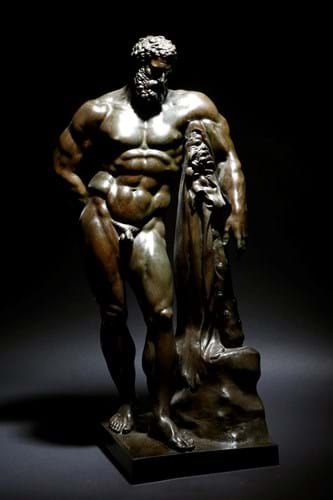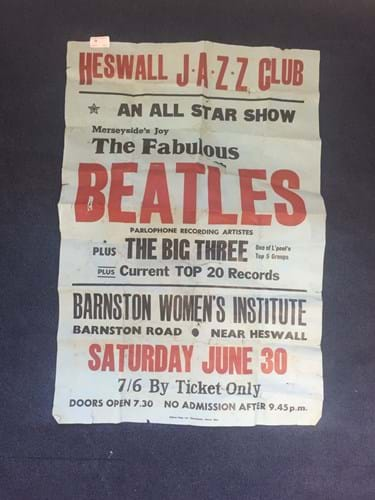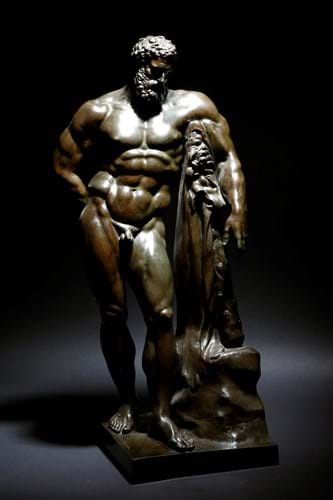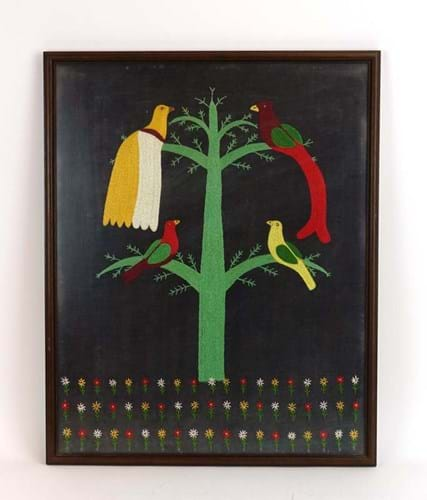1. Silver shekel
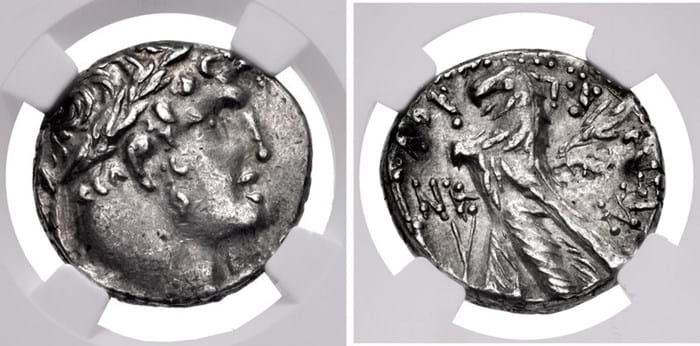
A silver shekel struck in Tyre (Phoenicia) at the turn of the first millennium dated CY 158 (AD 32-33) sold at $8000.
The sale held by Classical Numismatic Group on January 9 as part of the four-day New York International Numismatic Convention included more than two dozen examples of this silver coin – a silver shekel struck in Tyre (Phoenicia) at the turn of the first millennium. All followed the same design - the head of Melkart (the chief deity of Tyre) and an eagle verso – but each carried a different first century date. Some are clearly rarer than others as, though each carried hopes of $300-500 each, some were competed well beyond expectations. This example dated CY 158 (AD 32-33) sold at $8000 while those from AD15-16 and AD31-32 took $6000 and $5500 respectively. All were bought by bidders via thesaleroom.com.
Part of this coin’s appeal is that many were struck in the lifetime of Christ and Tyre, a major Phoenician seaport in what is now southern Lebanon, is frequently mentioned in both the Old and New Testaments. The town came under Roman rule in 64bc.
2. Beatles poster
This rare poster for the performance of a popular Liverpool four-piece band at the Heswall Jazz Club in the Wirral on June 30, 1962 sold for a surprise £1400 at Boningtons of Epping, Essex on January 7. The buyer tendered the winning bid via thesaleroom.com – way above the £80-120 estimate.
Few of these posters from the embryonic years of Fab Four survive. This was The Beatles' second of three performances at the Barnston Women's Institute in 1962 (the others in March and September). Also on the bill in June was fellow Liverpool band The Big Three with entry costing seven shillings and sixpence.
3. Hercules bronze
The Farnese Hercules, a massive Roman marble statue after a Greek bronze original made for the Baths of Caracalla that was rediscovered in 1546, stood for generations in its own room in the Palazzo Farnese, Rome. Countless reproductions were made for sale to Grand Tour visitors – including this 2ft 4in (71cm) high bronze sold for £8000 at Woolley & Wallis in Salisbury on January 9. It carried a provenance to the collection of well-known QC, Oxford fellow and antiques connoisseur Sir Jeremy Lever.
The original Farnese Hercules, that depicts the weary, muscular, mythic hero leaning on his club after completing one of the last of his 12 labours, now resides in the Museo Archeologico Nazionale, Naples.
4. Woolwork picture
Age, quality of craftsmanship and decorative appeal all count towards the commercial appeal of a needlework. An additional factor to consider is sentiment. This early 20th century woolwork picture of stylised birds measuring 2ft 1in x 19in (62 x 49cm) was sold by Bedford auctioneers WH Peacock on January 4 for £750. Part of its appeal was the inclusion of a letter written by one A Wilkinson, aged 82, in 1960. He describes his surprise at completing the piece, recounting how he received the 'last sacrament' during the Boer War and was reported dead by the War Office in 1901, later spending time in nine hospitals.
5. Tetradrachm coin
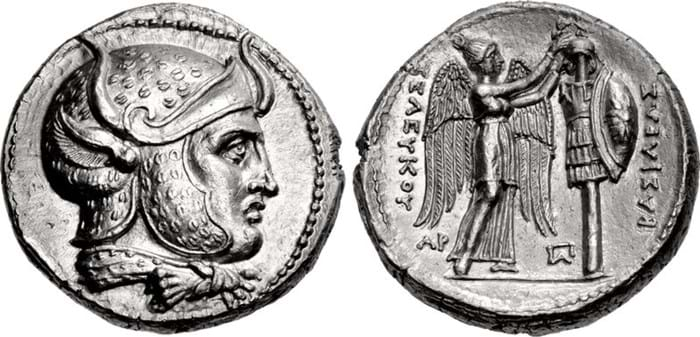
This tetradrachm is one of only a handful of its type known and sold at a mid-estimate of $50,000.
Seleucus I Nicator (c.358BC-281BC) was the last of the original Diadochi – the rival generals, families and friends of Alexander the Great who fought for control over his empire after his death in 323BC. Seleucus, who had previously served as an infantry general, established himself in much of Alexander’s territory in the Near East. Having defeated his most formidable enemy at the pivotal Battle of Ipsos he minted a victory coinage from Susa – located in the lower Zagros Mountains in what is now the modern Iranian town of Shush. This tetradrachm is one of only a handful of its type known. To one side is the image of a hero (perhaps Seleucus himself) while to the reverse is the figure of Nike placing a wreath or a trophy. It sold to an online bidder via thesaleroom.com at a mid-estimate of $50,000 as part of the Classical Numismatic Group sale at the New York International Numismatic Convention on January 8-9.


